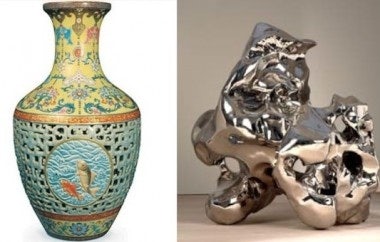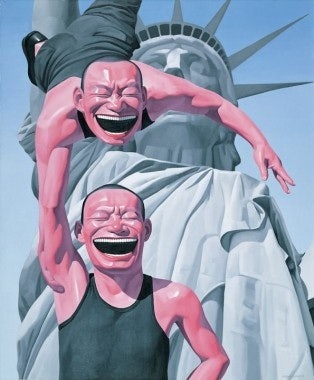Rising Inflation, Decreasing Savings Rate Expected To Cause More Consumer Spending, Safe-Haven Investing Among High-Net-Worth Chinese#

It's already an accepted fact in the luxury industry that wealthy Chinese consumers are here to stay. Now the question is how to get them to wind down their notoriously high savings rate and spend more. However, Chinese shoppers appear to be doing this on their own, regardless of the ongoing digital and traditional media marketing blitz in which some high-end companies are currently engaged. According to the Wall Street Journal, as the number of Chinese millionaires continues to climb, China's 53.2% savings rate is forecast to decline and consumer spending set to rise long term. As the Journal adds, this trend should be very fortuitous for one company in particular -- the Geneva-based luxury juggernaut Cie. Financiére Richemont, owner of brands like Cartier, Piaget, and Montblanc.
Like another high-powered, high-end conglomerate, LVMH Moët Hennessy • Louis Vuitton S.A. (LVMH), Richemont has seen its fortunes soar in China over the past 10 years, led mostly by intensive expansion efforts and a strong presence in Beijing and Shanghai -- as well as Hong Kong, where its brands' stores are often packed with mainland Chinese tourist-shoppers. Growth has been significant for Richemont this year, with the Wall Street Journal noting the company's shares have risen some 50% since January, outperforming peers like LVMH. (Though LVMH certainly isn't hurting in China either.)
Like many major luxury-focused companies in China, Richemont's success there has been driven primarily by middle-aged male shoppers, who consistently rank Richemont brands like Vacheron Constantin, Piaget, Dunhill, Montblanc and Roger Dubuis among their favorites. However, Richemont should continue to benefit from the growing economic independence of female shoppers in China as well, considering the popularity of brands like Chloé, Cartier and Van Cleef & Arpels among this demographic.
But Richemont won't be the only one to effectively tap Chinese millionaires this fall. As Jing Daily wrote last week, at recent auctions in Hong Kong and London, Chinese buyers have been exceptionally profligate, with one mainland Chinese collector spending a record-breaking $85 million for a Qianlong-era vase at Bainbridges Auction House last week and another bidding $32 million for a Qianlong vase at Sotheby's in October. In both cases -- just two of many in the last few years -- bidding climbed far beyond all expectations, with the Bainbridges vase selling for 44 times its high estimate and the Sotheby's piece going five times above. In the world of Chinese antiques -- particularly those from single collections outside of China (especially in the UK or France), and those from popular historical eras like the Qianlong period (1735-1799) or Kangxi period (1661-1722) -- we can only expect to see this free-spending trend continue as these items become more scarce and more wealthy Chinese bidders try to get in on the game.

As Jing Daily has written previously, Chinese bidders aren't only dropping millions for these antiques out of a desire to repatriate items that were often smuggled out of the country in previous centuries (although that's part of it), they're also doing it because they're concerned about the other investment options out there and rising inflation at home.Buying antiques for tens of millions now might seem brash, but in the minds of these new collectors, it's often safer than putting that money into the stock market or real estate. Also -- for some wealthy Chinese whose fortunes have come through not-quite-legal means -- portable investments like a Qianlong vase don't often invite the same level of scrutiny as a Lamborghini or a cavernous villa outside of Beijing.
Look for auction houses like Sotheby's and Christie's to be packed with Chinese bidders as the year winds down, not only at antique or wine auctions but also those focused more on modern and contemporary Chinese and Asian art. Rare vases and jewelry aren't the only "hedges" for the burgeoning Chinese collector. As we've seen at recent contemporary art auctions, Chinese collectors also see work by blue-chip living artists as a good place to stash their money, with artists like Liu Ye, Zhang Xiaogang and Zeng Fanzhi leading the pack. The next chance we'll have to see Chinese collectors in action is the upcoming Asian Contemporary and 20th Century Art auctions in Hong Kong on the 27th and 28th of this month. With works by popular artists like Zhang, Yue Minjun and Zao Wou-ki on the block, we shouldn't be surprised to see high estimates crushed once again.